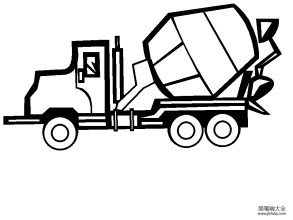Safe Operation of Concrete Pumps: A Guide to Ensuring Efficiency and Safety on the Job Site
- sophieaimix
- Nov 14, 2023
- 3 min read
Concrete pumps are vital tools in modern construction, providing a highly efficient means of delivering concrete to various locations on a job site. However, their operation demands a keen understanding of safety protocols to prevent accidents and ensure the well-being of workers. This article outlines key guidelines for the safe operation of concrete pumps, emphasizing the importance of training, maintenance, and adherence to established safety procedures.

Operator Training and Certification:
The first and foremost aspect of safe concrete pump operation is ensuring that operators are adequately trained and certified. Operators should undergo comprehensive training programs that cover the technical aspects of pump operation, understanding the equipment's controls, emergency procedures, and safety protocols. Certification ensures that operators possess the necessary skills and knowledge to handle the complexities of concrete trailer pump operation safely.
Pre-Operational Inspections:
Before commencing any concrete pumping activities, a thorough pre-operational inspection is imperative. This includes checking all components of the pump, from the hydraulic system and hoses to the electrical controls and safety devices. Any signs of wear, damage, or malfunction should be addressed promptly to prevent potential issues during operation. A checklist that covers all critical aspects of the pump should be part of the routine inspection process.
Site Assessment and Setup:
A critical step in ensuring safe pump operation is a thorough assessment of the job site. Operators should evaluate the terrain, overhead obstructions, and proximity to other equipment. Establishing a clear and safe setup area is essential, taking into account factors such as stability, ground conditions, and the potential for uneven surfaces. Proper outrigger deployment, if applicable, is crucial to the stability of the concrete pump during operation.
Clear Communication and Coordination:
Effective communication is the linchpin of safety on a construction site. Before starting concrete pumping activities, a comprehensive safety briefing should be conducted. Clear communication channels between the pump operator and other personnel, including those at the delivery and receiving ends, must be established. Coordination ensures that everyone is aware of their roles, potential hazards, and emergency procedures.

Boom Operation and Control:
The concrete pump's boom is a versatile and powerful component, but its operation requires precision and caution. Operators should be well-versed in controlling the boom movements of the concrete boom pump, including extension, retraction, and rotation. Avoiding abrupt movements and ensuring that the boom is clear of obstructions are critical aspects of safe operation. Understanding the load limits and capacity of the pump is essential to prevent overloading, which can lead to structural failures.
Concrete Hose Safety:
Concrete hoses are integral to the pumping process, but they also pose potential hazards if not handled properly. Hoses should be inspected for wear and tear, securely connected, and properly supported to prevent whipping. Operators should be aware of the hose movements during pumping to avoid entanglements and ensure that hoses are not dragged over sharp edges or abrasive surfaces.
Emergency Preparedness:
Despite meticulous planning and adherence to safety measures, emergencies can still occur. Operators must be trained in emergency procedures, including shutting down the pump in case of malfunctions, addressing hose blockages, and responding to unexpected events. Adequate first aid and firefighting equipment should be readily available on-site.
Conclusion:
The safe operation of concrete pumps is a collective responsibility that begins with comprehensive training and extends to meticulous pre-operational inspections, clear communication, and adherence to safety protocols during every phase of pumping activities. As these machines continue to play a crucial role in the construction industry, a steadfast commitment to safety ensures that concrete pump operations contribute to project success without compromising the well-being of personnel or the integrity of the equipment.






Comments